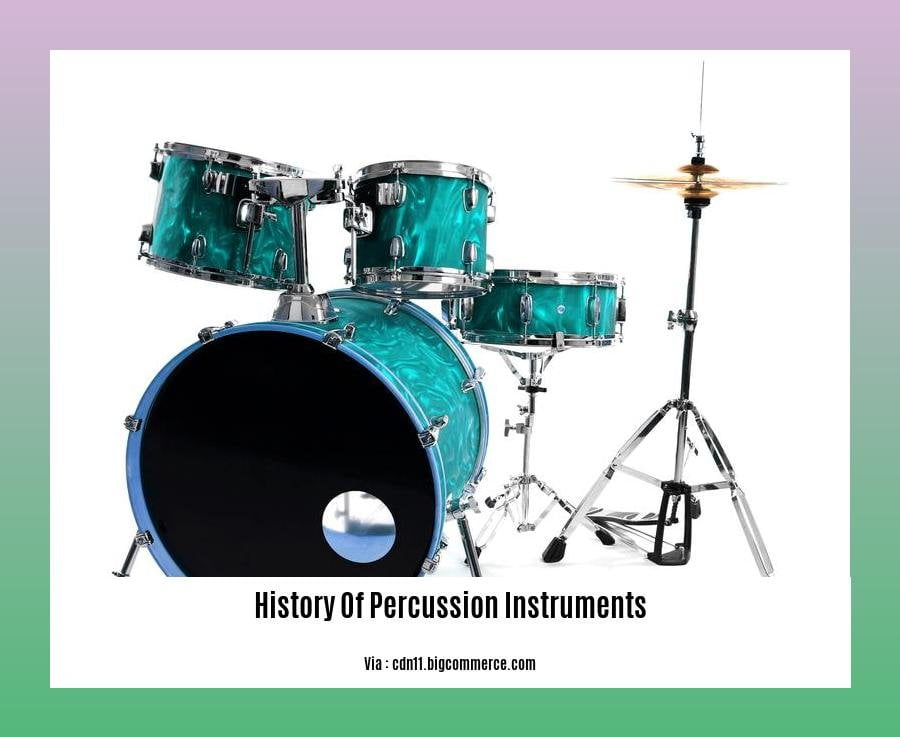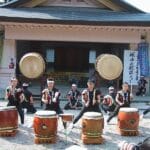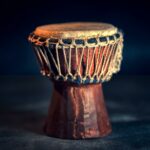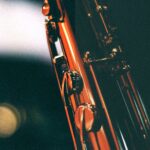Let’s embark on an enchanting journey through the history of percussion instruments in [The Enchanting Journey Through the History of Percussion Instruments: Rhythms That Resonate Through Time]. Percussion instruments, the heartbeat of music, have captivated civilizations for millennia, weaving a rich tapestry of sound that transcends cultures and time. Come, let us explore the fascinating stories behind these rhythmic treasures.
Key Takeaways:
The history of percussion instruments can be traced back to as early as 70,000 BC, with idiophones being the earliest type.
Drums are among the oldest percussion instruments, with discoveries dating back to 6000 BCE in Mesopotamia, predating the Sumerian civilization.
The term “percussion instrument” was coined in 1619 by Michael Praetorius, encompassing any struck instrument, including chordophones.
History of Percussion Instruments
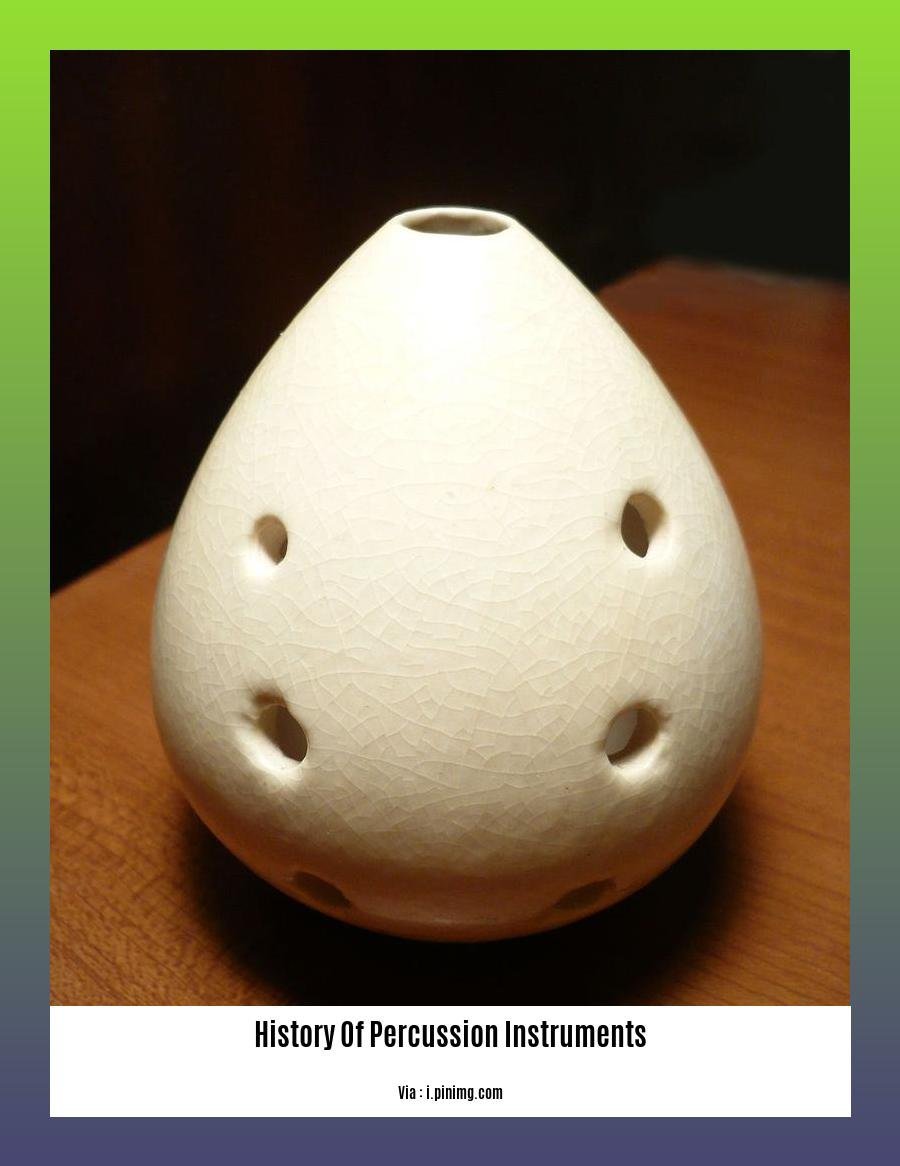
We bet you never knew a simple beat could carry so much history and cultural significance, did you? Embark with us on this rhythmic odyssey as we delve into the fascinating world of percussion instruments, tracing their evolutionary journey from ancient origins to modern-day marvels.
The Dawn of Rhythm: The Early Percussion Era
The earliest percussion instruments, known as idiophones, emerged around 70,000 BC. These simple instruments, crafted from natural materials like wood, stone, and bone, produced sound through vibration when struck or shaken.
Drums: The Heartbeat of Ancient Civilizations
Among the oldest percussion instruments discovered are drums. Archaeologists unearthed drums in Mesopotamia dating back to 6000 BC, predating the Sumerian civilization. These early drums, made from animal skins stretched over hollowed-out logs or clay pots, reverberated with the rhythm of life in ancient societies.
The Birth of Percussion Terminology
The term “percussion instrument” was coined in 1619 by German music theorist Michael Praetorius. Praetorius’s definition encompassed any instrument that produced sound when struck, including a wide range of instruments from drums and cymbals to xylophones and glockenspiels.
The Evolution of Percussion Instruments
Over time, the history of percussion instruments unfolded as civilizations around the world developed their unique instruments. In Africa, the djembe and talking drum became integral to traditional music and ceremonies. In Asia, instruments like the gong and taiko drum reverberated through religious rituals and festivals. In Europe, the timpani and snare drum found their place in classical orchestras and military bands.
Percussion in Modern Music
In the 20th century, percussion instruments experienced a resurgence as they were incorporated into a variety of musical genres. Jazz drummers like Gene Krupa and Buddy Rich pushed the boundaries of rhythm, while rock and pop bands embraced the driving beats of drums and cymbals. Today, percussion instruments are an indispensable part of contemporary music, adding color, texture, and rhythm to a vast array of musical styles.
The Enduring Legacy of Percussion
From the primal beats of ancient drums to the complex rhythms of modern music, percussion instruments have left an enduring mark on the history of music and culture. They have served as tools for communication, celebration, religious rituals, and artistic expression. Their rhythmic pulse continues to resonate through time, connecting people across cultures and generations.
- Did you know that there’s an interesting history behind paper bags? Learn all about it here.
- Want to know how parchment paper came to be? Find out the fascinating story here.
- Have you ever wondered how pedicures came to be? Look no further, the answer is here.
Cultural Influences: Percussion Instruments in Diverse Societies
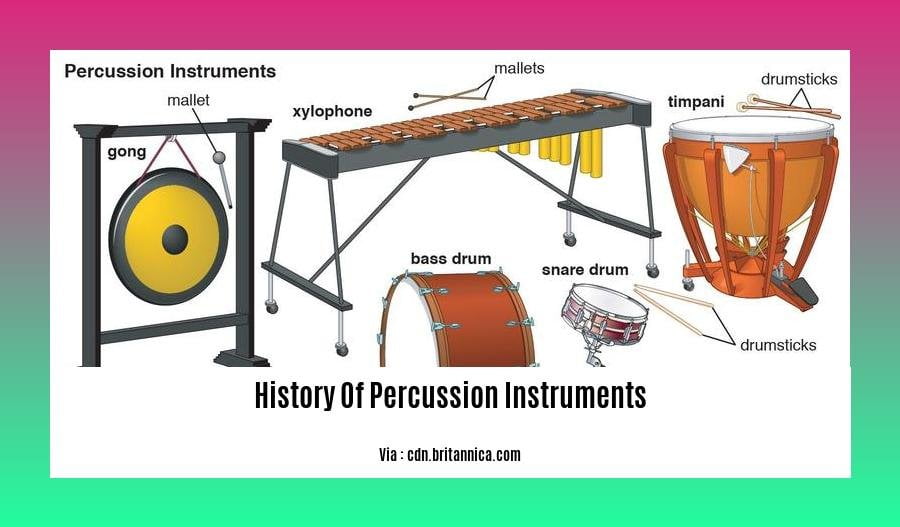
From African djembes to Asian gongs and European drums, percussion instruments have left an indelible mark on global music. Join us on a rhythmical journey through the ages, discovering how these instruments weave cultural narratives and form the backbone of societies worldwide.
A journey through cultures and rhythms awaits, as we discover the profound influence of percussion instruments in shaping diverse societies.
Cultural Diversity and Rhythmic Expressions:
Percussion instruments embody the rich tapestry of human cultures, each with its unique story to tell. They mirror the traditions, beliefs, and artistry of the societies they belong to. Whether it’s the celebratory beats of African djembes, the meditative resonance of Tibetan singing bowls, or the driving rhythms of the Brazilian samba, these instruments capture the spirit of their respective cultures.
Percussion instruments aren’t just objects; they are powerful symbols of cultural identity, echoing the heartbeat of communities.
Drums: The Heartbeat of Communication:
In many cultures, drums serve as a medium of communication. Take the talking drums of West Africa, which mimic human speech by altering the pitch and tone of the drumhead. These drums enable complex conversations over long distances, playing a vital role in information exchange and storytelling.
Drums, with their distinctive beats and rhythms, have transcended their musical purpose, becoming a language of their own.
Rituals and Ceremonies:
Percussion instruments hold a sacred place in rituals and ceremonies worldwide. In religious traditions, drums, bells, and rattles are used to evoke spiritual energies, accompany prayers, and mark significant moments in a community’s life. From the Tibetan Buddhist prayer wheels to the ceremonial drums of Native American tribes, these instruments create a sacred atmosphere, connecting the physical and spiritual realms.
Storytelling and Dance:
Percussion instruments play a crucial role in storytelling and dance. The rhythmic beats of a drum, the melodic chimes of bells, and the vibrant shakers create a captivating soundscape that enhances the narrative. In many cultures, dance and music are intertwined, with percussion instruments providing the rhythmic foundation for graceful movements and expressive storytelling.
Percussion instruments aren’t just heard; they are felt, inspiring movement, emotion, and connection.
Contemporary Music and Global Rhythms:
In the realm of contemporary music, percussion instruments have broken down cultural barriers and created a global rhythm. The infusion of traditional percussion instruments into popular music genres like jazz, rock, and pop has given rise to new soundscapes and cross-cultural collaborations.
Key Takeaways:
- Percussion instruments are deeply rooted in cultural diversity, embodying the traditions, beliefs, and artistry of different societies.
- Drums serve as a medium of communication in many cultures, enabling information exchange and storytelling.
- Percussion instruments play a sacred role in rituals and ceremonies, connecting the physical and spiritual realms.
- They enhance storytelling and dance, creating a captivating soundscape that inspires movement, emotion, and connection.
- In contemporary music, percussion instruments have blended cultural rhythms, leading to exciting new soundscapes and cross-cultural collaborations.
Citations:
- The Cultural Significance of Percussion Instruments
- The Role of Percussion Instruments in Diverse Cultures
The Role in Traditional Music: Percussion Instruments as Storytellers
In the captivating world of traditional music, the enchanting notes of percussion instruments serve as compelling storytellers. They transcend mere rhythm-keepers to become expressive voices that narrate tales of people, places, and emotions.
These instruments, crafted from natural materials like wood, stone, and bone, speak of humanity’s earliest attempts to create structured sound. In Africa, the resonant voice of the djembe narrates stories of joy, sorrow, and triumph. In the vibrant lands of Asia, gongs and taiko drums resonate with legends and myths, carrying the echoes of ancient traditions. In Europe, the rolling thunder of timpani and the crisp cadence of snare drums reverberate through tales of battles, victories, and royal processions.
Beyond their musical narratives, percussion instruments hold a deep-rooted spiritual and ceremonial significance. In many cultures, drums are believed to possess supernatural powers, used to communicate with spirits, invoke divine intervention, and facilitate healing ceremonies.
The indigenous cultures of Australia, for instance, revere the didgeridoo for its unique ability to connect them to the Dreamtime, their ancestral realm. In West Africa, the talking drums are not just instruments; they are voices of the community, communicating news, warnings, and stories over vast distances.
The versatility of percussion instruments extends beyond traditional settings. In the 20th century, they found their way into the vibrant tapestry of jazz, rock, and pop music, pushing the boundaries of rhythm and driving the pulse of modern musical expression.
Key Takeaways:
- Percussion instruments are vital storytellers in traditional music, conveying tales of joy, sorrow, victory, and cultural heritage.
- Crafted from natural materials, they hold deep spiritual and ceremonial significance, often associated with supernatural powers and communication with spirits.
- Beyond their rhythmic function, percussion instruments serve as community voices, conveying news, warnings, and stories across vast distances.
- In the modern era, they have revolutionized the soundscape of jazz, rock, and pop music, becoming indispensable elements of contemporary musical expression.
Sources:
– Percussion Instrument – Encyclopedia Britannica
– List of Percussion Instruments – Wikipedia
Adaptation and Innovation: Modern Interpretations and Experimentations
As percussion instruments traverse the annals of time, their journey is far from static. Adaptation and Innovation: Modern Interpretations and Experimentations have propelled these instruments into a realm of boundless possibilities, blurring the lines between tradition and modernity.
Embracing Digital Soundscapes
The advent of digital technology has irrevocably transformed the landscape of percussion music. Electronic drums, samplers, and synthesizers have granted musicians an unprecedented palette of sounds, allowing them to craft compositions that transcend the confines of traditional acoustics.
Transducer Percussion: A New Frontier
Beyond the realm of digital sounds, transducer percussion has emerged as a revolutionary force. Transducers, devices that convert physical gestures into electrical signals, have opened up a world of possibilities for percussionists, enabling them to create music without the need for conventional instruments or techniques.
Post-Instrumental Practice: Uncharted Territories
Pushing the boundaries even further, post-instrumental practice challenges the very notion of what constitutes a percussion instrument. Practitioners of this avant-garde approach employ unconventional objects and spatial gestures to create soundscapes that defy categorization.
Key Takeaways:
- Digital technology has revolutionized percussion music with electronic drums, samplers, and synthesizers.
- Transducer percussion converts physical gestures into electrical signals, opening up new avenues for sonic exploration.
- Post-instrumental practice challenges traditional notions of percussion instruments, using unconventional objects and spatial gestures.
Relevant URL Sources:
- Percussion in the 21st Century: New Directions and Innovations
- Transducer Percussion: A New Approach to Music Performance and Composition
FAQ
Q: What are the earliest known percussion instruments?
A: The earliest known percussion instruments are idiophones, which date back to 70,000 BCE. These instruments produce sound when their own substance vibrates, such as rocks struck together or animal bones.Q: Where were the oldest drums discovered?
A: The oldest drums discovered by archaeologists were found in Mesopotamia, dating back to around 6000 BCE. These drums predated the Sumerian civilization by two thousand years, indicating the long history of drum usage in the region.Q: Who coined the term “percussion instrument”?
A: The term “percussion instrument” was coined in 1619 by German music theorist and composer Michael Praetorius. He used the term to refer to any instrument that produced sound when struck, including chordophones like the harpsichord and lute.Q: What are the two main categories of percussion instruments?
A: The two main categories of percussion instruments are idiophones and membranophones. Idiophones vibrate to produce sound, while membranophones use vibrating membranes.Q: What are some examples of idiophones and membranophones?
A: Examples of idiophones include xylophones, bells, and cymbals. Examples of membranophones include drums, timpani, and tambourines.
- China II Review: Delicious Food & Speedy Service - April 17, 2025
- Understand Virginia’s Flag: History & Debate - April 17, 2025
- Explore Long Island’s Map: Unique Regions & Insights - April 17, 2025
